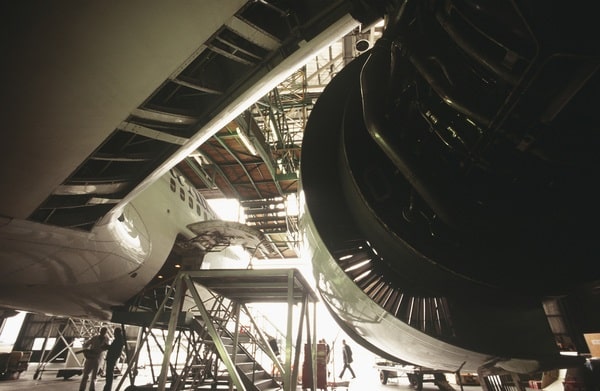4 Tracking and Traceability Best Practices for Aircraft Manufacturers


Aircraft manufacturing has a challenging and complex supply chain that must be managed with a high level of precision. Designing, manufacturing, and operating aircraft requires careful coordination between several commercial and regulatory organizations. The International Air Transport Association (IATA) is one of the largest aircraft trade associations and helps coordinate important safety and quality practices across the industry.
Basic documentation requirements exist for tracking information such as flight hours, cycles flown, and the remaining life of aircraft and parts. The existing regulations, however, do not include detailed requirements for tracking and traceability, which has led many businesses to implement their own. This has created some confusion among aircraft manufacturers and suppliers since there is no standardized way to proceed.
The goal of improving documentation practices is to create end-to-end traceability for all parts and supplies that exist in aircraft supply chains. This post explores some of the best practices for improving tracking and traceability documentation. By familiarizing yourself with these best practices, you can help balance the commercial interests among your suppliers and end-users.

Aircraft manufacturers and operators must monitor a multitude of different assets and ensure that they are available and in good operating order. To accomplish this, most companies implement a collection of software and hardware technologies to streamline tracking and traceability processes. These may include resources for:
Most of the best practices discussed in this post can impact several of these areas and help to improve the overall efficiency of your asset management workflows.
One of the most reliable ways to improve asset tracking and traceability is by adding automation to your item identification process. Legacy systems typically rely on human-readable text, which can lead to data entry errors and incorrect assignments. Adding barcode labels to assets helps improve the process, with easily scannable identification tags that reduce or eliminate human error when it comes to asset identification and data entry. Many aircraft manufacturers are moving to RFID tags, which can completely automate identification with a high level of accuracy.
Aircraft manufacturers may be supplying planes and hardware to airline operators, defense contractors, or other entities such as logistics businesses. Each industry has unique requirements for traceability, and documentation plays a central role in ensuring the proper chain of custody throughout the entire supplier pipeline. If paperwork is lost or misplaced, it’s often necessary to retrieve the documents from the original manufacturer, which can lead to delays and lost time. In some cases, it may also require the equipment or part to be returned to the supplier for inspection or verification. The use of durable aircraft data plates, such as Metalphoto® photosensitive anodized aluminum data plates, helps to ensure proper asset identification and allows components to be traced back to the manufacturer.
By tracking documentation in real-time, you can ensure that the proper records are present at the point of receipt and during key steps of your inventory and maintenance workflows. It’s important to review documentation differences between FAA-certified and non-FAA certified sources of new parts, and you should also review your documentation practices for returnable assets.

Aircraft suppliers that work with the U.S. Federal Aviation Administration (FAA), National Aeronautics and Space Administration (NASA), or U.S. Department of Defense (DoD) may want to consider getting an AS 9100 certification. While not specifically required for most aircraft operations, this standard is an excellent resource for ensuring that your internal systems can properly track and trace components with a high degree of reliability.
The AS 9100D quality standards are maintained by the Society of Automotive Engineers (SAE) and are designed as a flexible system that can be used to guide your internal practices. The standards build upon ISO:9001 requirements and are meant to complement existing commercial and regulatory requirements that may impact each industry. They are therefore an excellent and broad standard to use for reference.
In recent years, a lot of attention has been placed on life-limited parts (LLP) and how they are tracked between airline operators, parts suppliers, and lessors/owners. Since these parts are often traded frequently and can be sold on secondary markets, it is crucial for all parties involved to ensure proper documentation is maintained for these assets. The value of an LLP is related to the remaining useful life, so it’s critical that this value is accurate based on previous usage and maintenance activities. LLPs are typically found in the engines of an aircraft but can also be part of landing gear or auxiliary power units.
Since no industry-wide regulations exist specifically for LLP documentation, many businesses within the supply chain have created their own requirements. It’s a good practice to work with your suppliers and customers to understand how best to improve LLP documentation to maximize efficiency and accuracy for all parties throughout the supply chain.
The aircraft industry is remarkably complex, and best practices continue to evolve as new requirements develop. By working closely with regulatory bodies and your supply chain partners, you can maintain proper tracking and traceability. These efforts may be a major challenge but are also an opportunity to differentiate your aircraft manufacturing operation and position your company as an industry leader.
Our sales engineers are experts in automatic asset tracking, tagging and identification,a nd can answer all your questions. Get in touch now.
Lets Talk ›